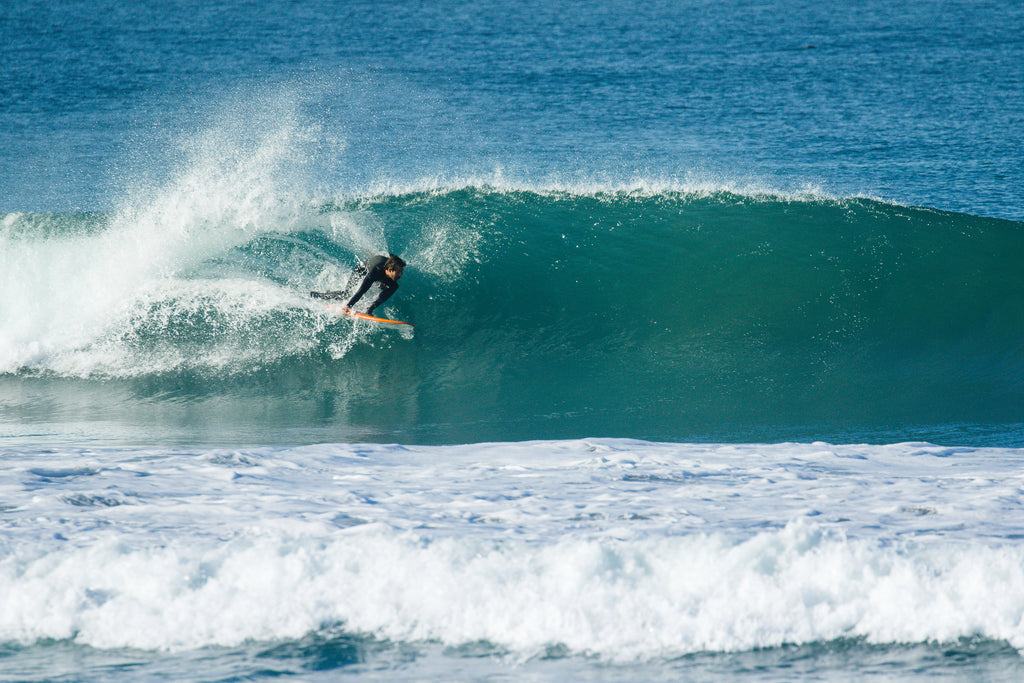The Differences Between Beach Breaks, Point Breaks, and Reef Breaks
 Many people assume that a surfable wave is the same wherever you go. The wave comes out of the water, you jump on your surfboard, and proceed to surf it. However, there is more to a little more to it than that. Depending on where the wave starts depends on how the wave will behave and what sort of ride the surfer can expect. For our purposes we are going to discuss waves at beach breaks, point breaks, and reef breaks.
Many people assume that a surfable wave is the same wherever you go. The wave comes out of the water, you jump on your surfboard, and proceed to surf it. However, there is more to a little more to it than that. Depending on where the wave starts depends on how the wave will behave and what sort of ride the surfer can expect. For our purposes we are going to discuss waves at beach breaks, point breaks, and reef breaks.
Beach Break. A beach break is a surf-able wave that is breaking onto a beach. The wave is created by the shallow sandy bottom, or sometimes a jetty or groyne. A beach break can either be caused by a sand bar out a little ways, or by the wave forming against the shoreline. The advantage to this type of surfing is that you normally don't have to paddle for miles to get out to the breaking waves. Beach breaks that are caused by sand bars are not always reliable as the underlying sand can move in big storms and swells. Beach break waves do not always break as softly as point break waves or reef waves. On the other hand, wiping out on a beach break tends to be a lot more forgiving than the alternatives.
Famous beach breaks are: Huntington Beach, and Trestles Beach, both in California, and Bells Beach in Victoria, Australia.

Point Break. When the conditions are perfect a point break can create a really long wave to ride as the wave wraps around a point or headland and then runs along the coastline of a bay or cove. Point breaks can have rock, coral, or sandy bottoms. Most surfers would consider a point break the perfect wave as the actual time riding the surfboard will be the longest. Due to the length of the individual waves and the ensuing time on the surfboard you will often see multiple surfers all riding the one point break wave (without fear of injuring each other). Point break waves can sometimes be difficult to get onto. Beware of surrounding rocks on the headland or point if you lose your surfboard or get swept onto them. Point breaks can be very reliable under the right conditions, as the headland or point that contributes to the waves is fixed.
Famous point breaks are: Puerto Escondido in Mexico, Jeffreys Bay in South Africa, Noosa in Queensland, Australia, and Rincon in California.
Reef Breaks. Reef breaks are created by a reef under the water, often coral. The surrounding water can be quite deep, but due to the formation of the coral reef the waves will break there, often seemingly in the middle of nowhere. Reef breaks can offer fantastic waves but can also be famous for nasty injuries. If you come off your board onto the coral, ouch!! Coral cuts can be pretty unforgiving, not to mention painful. Reef breaks often involve a very long paddle or a boat ride to get to where the waves are breaking. Reef breaks usually offer a longer wave to ride than a beach break. Beware of low tide barrels on the reef though! That coral isn't too far away if you fall off.
Famous reef breaks include: Pipeline in Hawaii, Uluwatu in Bali, and the very famous Teahupo'o off Tahiti.
Teahupo'o is a fantastic example of a coral reef break with heavy waves, great barrels, and often a very shallow bottom. Not for the faint hearted or beginner surfer. Watch the surf contests there and see why.
As you can see the dynamics of a surf wave can be dramatically different depending on the break involved. Start checking out where surfers are surfing and you will soon be able to spot the differences.







Why are the waves at the North Shore so big? The break seems sort of close in. Does it also have to do with the depth of the water on the shore side of the reef? Or is it just that it’s a long sustained swell that hits a really nice reef? Thanks!
Thanks this is really helpful
Leave a comment